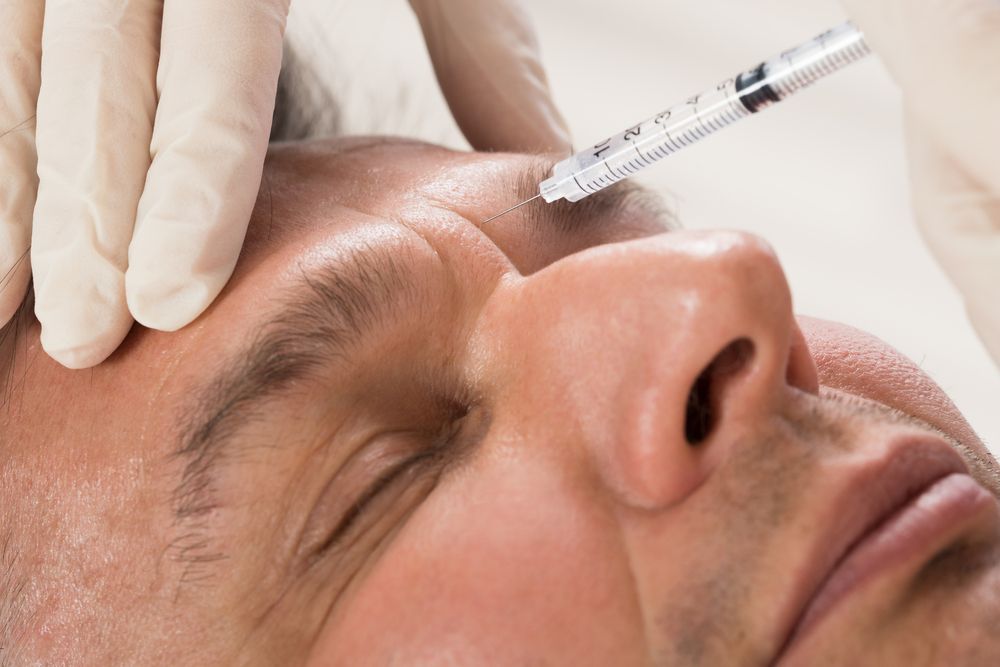- Acne
- Actinic Keratosis
- Aesthetics
- Alopecia
- Atopic Dermatitis
- Buy-and-Bill
- COVID-19
- Case-Based Roundtable
- Chronic Hand Eczema
- Chronic Spontaneous Urticaria
- Drug Watch
- Eczema
- General Dermatology
- Hidradenitis Suppurativa
- Melasma
- NP and PA
- Pediatric Dermatology
- Pigmentary Disorders
- Practice Management
- Precision Medicine and Biologics
- Prurigo Nodularis
- Psoriasis
- Psoriatic Arthritis
- Rare Disease
- Rosacea
- Skin Cancer
- Vitiligo
- Wound Care
Article
Higher doses of neurotoxin last longer
Author(s):
Increasingly higher doses of incobotulinumtoxinA (Xeomin) offer patients a longer duration of response in the treatment for glabellar frown lines, according to recently-presented clinical trial results.
Increasingly higher doses of incobotulinumtoxinA (Xeomin) offer patients a longer duration of response in the treatment for glabellar frown lines, according to recently-presented clinical trial results. (©AndreyPopov/Shutterstock)

Increasingly higher doses of incobotulinumtoxinA (Xeomin) offer patients a longer duration of response in the treatment for glabellar frown lines, according to recently-presented clinical trial results.
Presented at the 2018 American Society for Dermatologic Surgery annual meeting in Phoenix, the findings revealed progressively-increasing incobotulinumtoxinA doses higher than 20U were both safe and effective. Previous research suggested a linear relationship to response duration with doses escalating in 20U increments. Until now, the effects that increasing incobotulinumtoxinA doses had on response rates, as well as duration of response, had not been studied in a prospective, randomized, double-blind study.
To assess how varying doses of incobotulinumtoxinA affect safety, efficacy, and the duration of treatment effect for GFL, researchers enrolled 50 male and female participants with moderate-to-severe glabeller lines in a one-year study. Line severity was determined by the 5-point Merz Aesthetics Scale (MAS).
Participants were divided into three treatment groups. The control group of eight individuals received a 20U dose. A second group of 11 participants received a 60U dose, and a 17-person group received a 100U dose.
Overall, 36 participants completed the clinical trial, and they were eligible for retreatment at return to baseline. The researchers used standardized photography, self-assessment, and investigator evaluations to accurately assess efficacy.
Based on their findings, researchers revealed treatment response was highest with incobotulinumtoxinA doses of 60U and 100Uâthey saw a progressive increase in the duration of effect when patients receive larger amounts. According to results, the mean scores for returning to baseline were 126 days for the 20U group. It was 198 days for the 60U group and 271 days for the 100 U group.
Investigators reported that by nine months, 23 percent of participants in the 100U group remained responders to incobotulinumtoxinA. These patients achieved at least a two point improvement in wrinkle severity at maximum contraction based on the MAS scale.
Although patients achieved longer term responses with 100U doses (47 percent of subjects), there were some adverse events. Of the participants, 14 experienced 19 adverse events. These include headache, dry eyes, blurred vision, and injection site reactions, such as tenderness, erythema, and numbness/warmth. No ptosis was observed. None of these responses were deemed related to the distant spread of toxin, researchers said.
As a whole, they reported, patient satisfaction with the response and duration of treatment were high.
While the results are positive and encouraging, investigators said, they point to the need for a larger study.
Newsletter
Like what you’re reading? Subscribe to Dermatology Times for weekly updates on therapies, innovations, and real-world practice tips.














